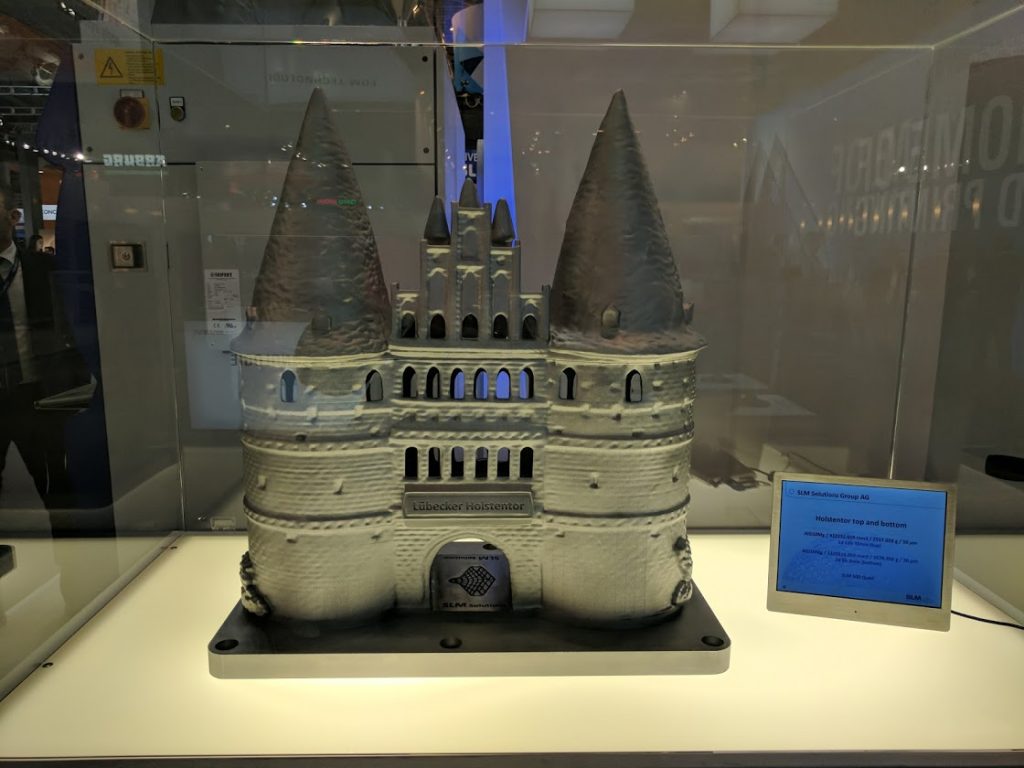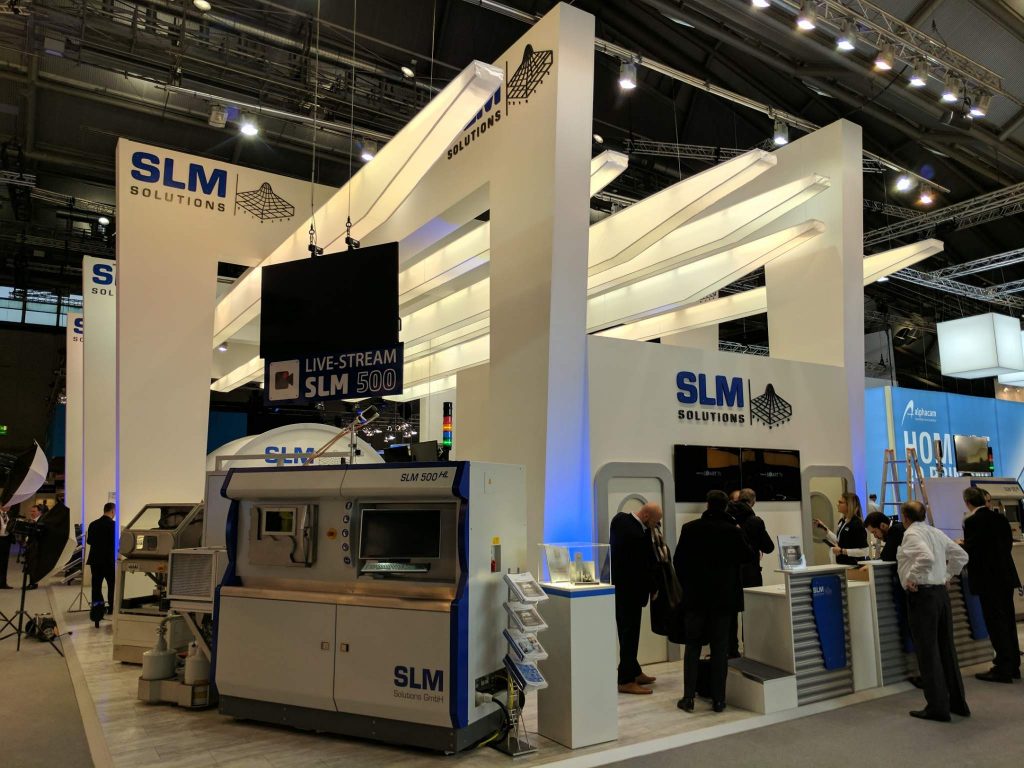This is a guest post in our series looking at the future of 3D Printing. To celebrate 5 years of reporting on the 3D printing industry, we’ve invited industry leaders and 3D printing experts to give us their perspective and predictions for the next 5 years and insight into trends in additive manufacturing.
Richard Grylls, PhD is Technical Director, NA at SLM Solutions. SLM Solutions are a leading manufacturer of metal additive manufacturing machines and Richard is co-inventor on 22 U.S. patents and three European patents, and has co-authored 23 technical papers.
3D Printing: The next 5 years by Richard Grylls, PhD, Technical Director, NA SLM Solutions
I was asked to write five hundred words on the next five years of additive manufacturing. No problem! Except, when you stop and think about it, the next five years should (will?!) see so many changes that it’s hard to decide what to write about.
At SLM Solutions we make metal additive machines that produce end-use parts for industrial and medical applications – think fuel nozzles for jet engines, implants for hip replacements, satellite components and more.
Today, around the world, hundreds of our machines are in production, producing these kind of parts, 24/7. Not tomorrow, not in five years’ time, but today.
What will be different in five years’ time? To me, the main difference will be the word “hundreds”. This can change, should change, will change, to at the very least, “thousands”. How about “tens of thousands”? “hundreds of thousands?!” Dare I say the “M” word?

What will it take?
Firstly, it’s probably not an exaggeration to say that for every SLM machine out there, there is at least one engineer supporting it: generating CAD models, making sure processes are followed, performing quality control, and so on.
Metal additive manufacturing today is a complex process, requiring great care, a high level of skill, and in-depth technical knowledge. Let’s use an example: right now if I hit “print” from my computer, I know that my Inkjet printer will just print out this page. I don’t need any in-depth technical knowledge on how my printer works – it just prints! All I need to do is put some more ink in when it tells me to. How do I use this analogy with metal additive manufacturing? Well, I need to introduce the Gutenburg printing press.

Additive engineers wanted
Metal AM today is not back in the Gutenburg days, but there’s still a long way to go to make the process seamless and robust for industrial applications. There simply aren’t enough engineers in the world to scale up to millions of machines if we continue to work in the manner we work today.
Innovation on design software, simulation, process automation, process monitoring and control, ease of use, quality control, and process speed – all are needed to bring this technology forward rapidly. I am happy to say that all are being worked, intensively, by brilliant teams at large and small companies, universities and labs around the world.
But, much work remains to be done.
The true picture of where additive can go
As far as applications are concerned, I think the next five years brings a lot more of the same.
Today, companies have a few parts made additively. Tomorrow, families of parts will be made additively, but it will largely be the same types of components as we make today. But, in five years’ time I think we will see the true picture of where additive can go.
We are just starting to see signs that engineering firms are printing components that “should” be made by other technologies (machining, casting), because metal AM is just simply easier than other techniques.
Ultimately, overall cost wins, but with the advances that should be in place in five years, the game can, should and will change.
When I hit print to print this page, I could save a few cents by printing it on our enterprise laser printer on the other side of the building. But the convenience (time = money) of just printing it on the printer on my desk will win.
What applications will win in five years’ time? Stay tuned to find out.
This is a guest post in our series looking at the future of 3D Printing, if you’d like to participate in this series then contact us for more information. For more insights into the 3D printing industry, sign up to our newsletter and follow our active social media channels. Let us know your thoughts about this perspective on the future of 3D printing in the comments below.
Don’t forget that you can vote now in the 1st annual 3D Printing Industry Awards.
More information about SLM Solutions is available here.
#futureof3Dprinting


